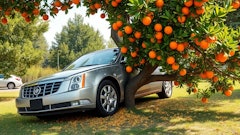
Toronto, Ontario — In this weekly electric and autonomous vehicle report, Tesla’s Cybertruck takes a page from aviation with a steer-by-wire system; and robots in Helsinki deliver gifts in time for the holidays.
Walk the wire
With the launch of the Cybertruck, Tesla has followed designs used in aviation and fitted its vehicle with a steer-by-wire system.
This means that the steering wheel in the Cybertruck has no physical connection to the wheels. Instead, the steering wheel movements are translated into electrical impulses replicated through the steering system by actuators.
To function properly, a low-latency communication system ensures that the wheels repeat the steering commands without lag.
Removing steering components also allows Tesla to lower the weight and the cost of the Cybertruck.
The potential downside of a steer-by-wire system is that it can introduce a lag between driver input and steering response. However, so far, the use of low-latency communication systems as a built-in redundancy means that early reviewers claim the lag is too small to be perceptible.
Supporting Santa
Santa will have support this holiday season—at least in Helsinki, Finland where innovation company Forum Virium Helsinki has developed an autonomous robot to help deliver gifts.
The robot, named HeRo after Helsinki Robot, is a battery-electric wheeled vehicle that will be used in two parts of the Finnish capital to take up the extra demand for home deliveries during the festive season.
Being trialed until the end of the year, the chief concern of HeRo’s run is whether or not the little robot vehicle can cope with Finland’s harsh winter conditions.
Forum Virium Helsinki claims that HeRo will be able to deliver parcels to customers’ doors within an hour of ordering from the online shop of their choice.
During its trial run, HeRo will deliver parcels on weekdays from 10 a.m. to 7 p.m.
Project manager Satu Reijonen noted that in the spring of next year, “we will expand our cooperation with various logistics operators so that we can optimize the delivery routes in terms of saving resources. Cooperation and shared rules will make it easier for the industry to operate as a whole and moving to emission-free deliveries would be faster.”






















